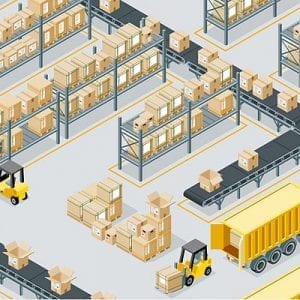
View original at www.ien.eu
With the digital revolution , every part of the production process is subject to change, from the shop floor to the management office. This has also impacted warehouses and order administration. Today, in many cases orders are automatically managed and sent to warehouses, but 99% of the times pallets are moved by humans . Why such a routine, monotonous and dangerous task hasn’t been automated yet? Why do we still accept driven-focused people in our warehouses? It’s interesting to notice that in the world there are nearly 2 00 billion dollars of pallet movements , of which less than 1% is performed by a robot. We have something like 7 million people who move pallets in our warehouses every day. Is this good news? Not really, as driving manual forklifts is a dangerous operation that generates tens of thousands serious injuries – and sometimes even death – on a global scale. Using robotic forklifts in warehouses This is one of the reasons why robotic forklifts should be adopted in warehouses but changing processes and, above all, employers – and employees – culture is a long process. Even though robots are part of our lives and perfectly integrated into our society, we still prefer to replicate traditional schemes not to risk to change for the better, being scared to change for the worse. The second important obstacle to the adoption of robotic technology on a large scale is the high expectations in terms of the quality and efficiency of the job – when it is performed by a robot. Errors are not tolerated for robots as much as they are for humans. Technology needs to reach a zero-risk and zero-error threshold to be acceptable and adoptable. That’s why the idea of self-driven vehicles in warehouses is still considered a bit […]



Leave a Reply
You must be logged in to post a comment.